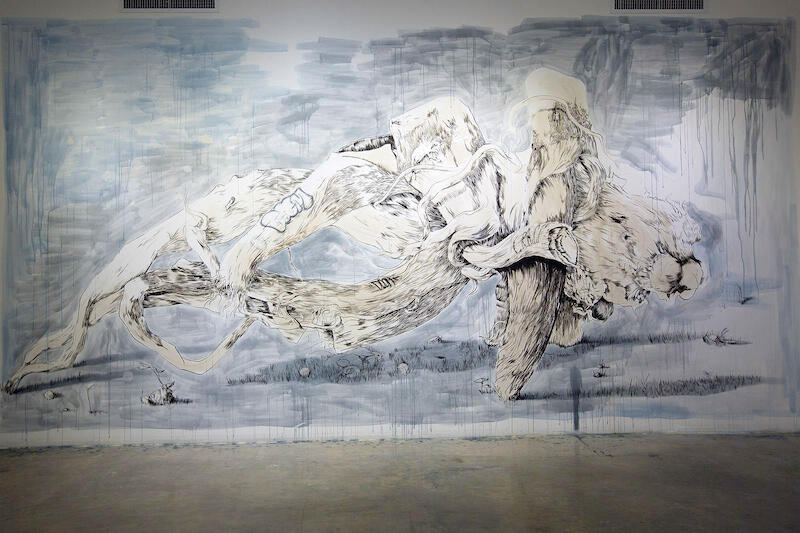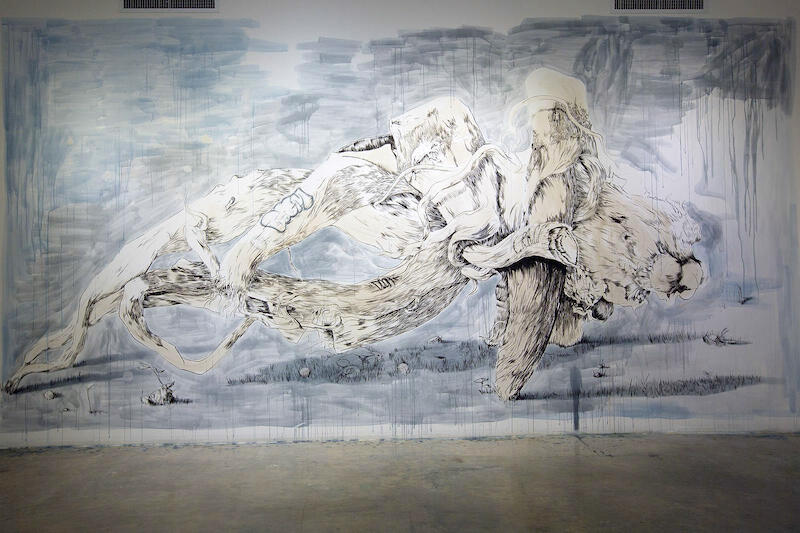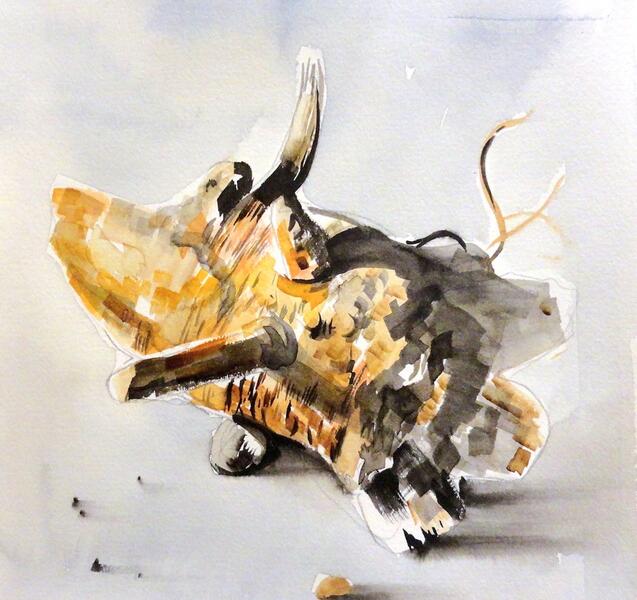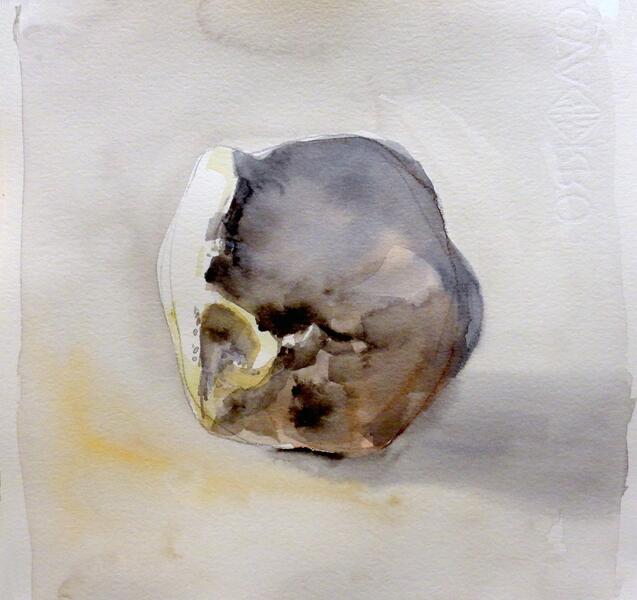Marcos Castro: The Influence of the Sublime.

In this case the mind is so entirely filled with its object, that it cannot entertain any other, nor by consequence reason on that object which employs it. Hence arises the great power of the sublime, that, far from being produced by them, anticipates our reasonings, and hurries us on by an irresistible force.
(Burke, Edmund, Philosophical Enquiry into the Origin of our Ideas of the Sublime and Beautiful.)
The work of Marcos Castro (Mexico City, 1981), delicate as it is, seems to renounce the emphatic axis that defines – and condemns – Western Art as an autonomous discipline. In fact, his proposal is masterfully structured just in the boundary between art and shamanism, between aesthetics and magical thinking. It is for this reason that when we enter the gallery, the empathy that results from the communion with the “object” – it is not by accident that Castro has titled the exhibition Objetos necesarios (Necessary Objects) – is of a mythical nature rather than an aesthetic one.
“ Drawing has been a human need since the time of cave paintings”, Marcos Castro explains. “ There is something organic about drawing that makes you feel you are part of the process. There is a bridge from the mind to your arms and from there to the materials that allows you to create something greater than yourself. That is my way of pursuing the sublime.”
Objetos necesarios, presented by Dotfiftyone, comprises small, medium sized and large format drawings executed on paper or directly on the gallery wall, as well as a central installation which, like an enigmatic totem, inhabits the center of the gallery. In the drawings, done in ink and watercolor, what prevails is the delicate and spontaneous line inherent to the chosen medium, which results in the intimist atmosphere, so dear to Marcos Castro’s proposal. Invariably, the portrayed object – that necessary object – is placed in the focal point of the composition, invariably in the foreground, and rooted out of any context that may ultimately divert our attention from the center of interest.
Small dying birds, nondescript pebbles, tangled branches and disturbing, inaccessible monoliths are the recurring themes which, like a chorus or a compulsive need, are reiterated once and again before our initially amazed and then transfigured gaze.
In these whimsical landscapes portrayed by Marcos Castro – it is necessary to note that we are in the presence of a dialogical unit in terms of pictorial genre: portrait and landscape – there is a sort of psychological zoom-in that results in the plain detail through which the artist forces the viewer to focus on that minute spot – which would otherwise go unnoticed – of a vaster landscape which we will eventually and infallibly reconstruct in our mind as part of the work that stretches beyond the physical borders of the painting.
This synecdoche effect is fundamental for the restructuring of meanings – and priorities – that Objetos necesarios proposes, where the inductive reasoning incited through the work leads us to reformulate our general perception of a much vaster reality. In this process of transfiguration, the repetition of a same motif once and again (pebble, bird, trunk) as in a sort of invocation or animist gesture, plays an essential role.
Ritual Object 1 and Ritual Object 2, both dated 2014, are vital in this respect. As a key element in these works, the silhouette of a human torso with its arms raised to the heavens as part of an essential and primeval cult in the presence of the revered object, appears through the gouache of the background against which the object rests.
Unavoidable in these works is the association with the Platonic allegory of the cave myth, which seems to be reaffirmed by the insidious structure that occupies the center of the premises.
Composed of wooden strips arranged in a pyramidal shape and covered with canvas, the structure which might well be a bonfire or a torch becomes the central axis around which all the works revolve. The spectator, midway between the source of light and the works, would be able to generate his/her own shadows and project them on the paintings if the source of light were activated – which would not necessarily imply solely a physical action but also a mental state: that enlightenment, that state of transfiguration that we alluded to from the beginning.
Based on this central axis, all the works integrate into this single installation that is ultimately, the allegory or cornerstone that supports Objetos necesarios. And through which the gallery, in a sort of temporal liberating regression, gives up the white cube and becomes, once again, a cave, a niche that fosters this sublime act, the antique and necessary ritual that is human creation.
-
 Ink and watercolor on paper, 52 x 73 in. / Tinta y acuarela sobre papel, 132 x 185,4 cm.
Ink and watercolor on paper, 52 x 73 in. / Tinta y acuarela sobre papel, 132 x 185,4 cm.
-
 Ink and watercolor on paper, 52 x 73 in. / Tinta y acuarela sobre papel, 132 x 185,4 cm.
Ink and watercolor on paper, 52 x 73 in. / Tinta y acuarela sobre papel, 132 x 185,4 cm. -
 Ink and watercolor on paper, 52 x 73 in. / Tinta y acuarela sobre papel, 132 x 185,4 cm.
Ink and watercolor on paper, 52 x 73 in. / Tinta y acuarela sobre papel, 132 x 185,4 cm. -
 Ink and watercolor on paper, 52 x 73 in. / Tinta y acuarela sobre papel, 132 x 185,4 cm.
Ink and watercolor on paper, 52 x 73 in. / Tinta y acuarela sobre papel, 132 x 185,4 cm.




